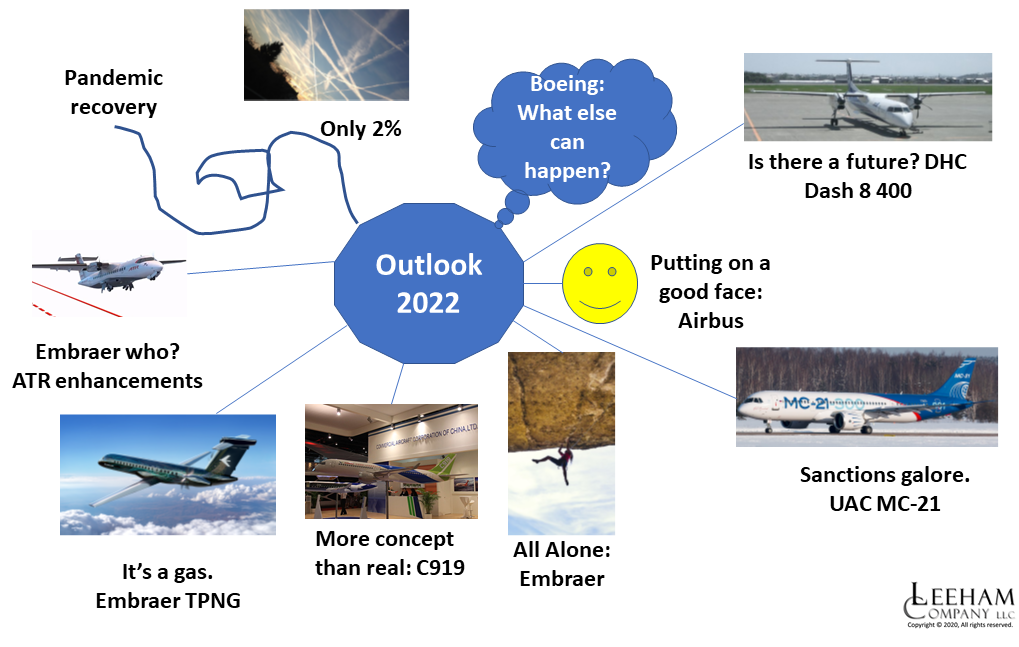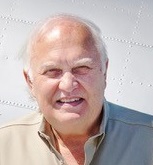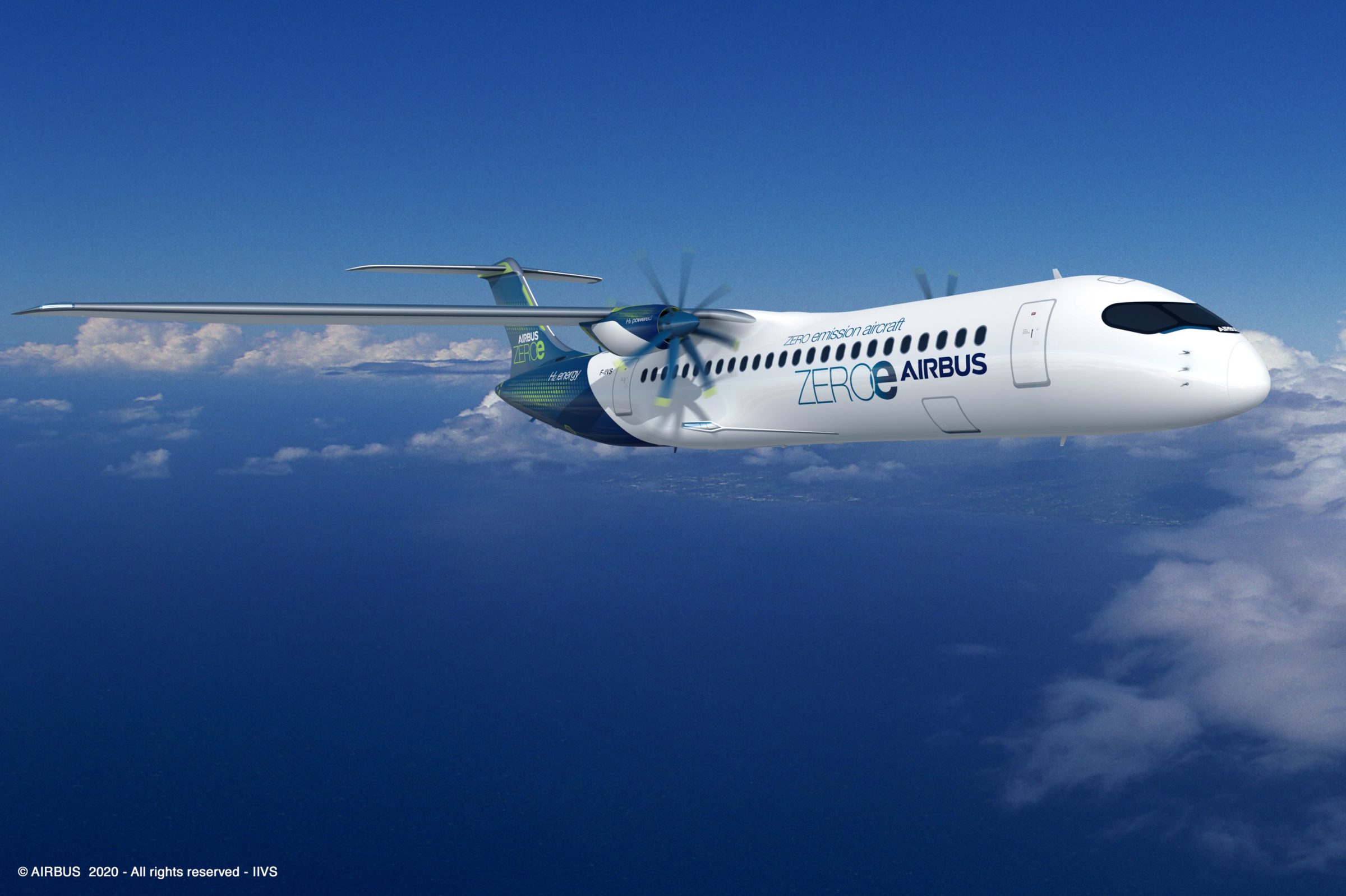Leeham News and Analysis
There's more to real news than a news release.
 Leeham News and Analysis
Leeham News and Analysis
- Bjorn’s Corner: New engine development. Part 4. Propulsive efficiency April 19, 2024
- Boeing unlikely to meet FAA’s 90-day deadline for new safety program April 18, 2024
- Focus on quality not slowing innovation, says GKN April 18, 2024
- Boeing defends 787, 777 against whistleblower charges April 17, 2024
- Dissecting Boeing CEO’s statement next new airplane will cost $50bn April 15, 2024
Forecast 2022: ATR has monopoly, De Havilland looks to hydrogen and Embraer lurks with new design
Subscription Required
By Scott Hamilton and Bjorn Fehrm
Introduction
Jan. 31, 2022, © Leeham News: ATR is now effectively the only turboprop manufacturer outside of China and Russia in the 40-80 seat sector. The models are the ATR 42-600, ATR 42-600S (STOL), and ATR 72-600.
 The series was built on simplicity with unpowered controls and the simplest possible systems. It has worked well for ATR when selling to markets that want airlift to the lowest possible cost. It also means the design is at its limits capacity and speed-wise, any more capacity or performance and it needs powered controls and more elaborate systems. It was behind ATR’s desire to develop a new, larger model in the past.
The series was built on simplicity with unpowered controls and the simplest possible systems. It has worked well for ATR when selling to markets that want airlift to the lowest possible cost. It also means the design is at its limits capacity and speed-wise, any more capacity or performance and it needs powered controls and more elaborate systems. It was behind ATR’s desire to develop a new, larger model in the past.
But ATR has little reason to develop a new turboprop now that it is in a monopoly position. This could change if Embraer proceeds with its concept for a new family of two turboprops, a 70- and a 90-seat aircraft. Embraer’s base design could form the basis of a hydrogen-burning gas turbine model in the future.
Posted on January 31, 2022 by Scott Hamilton
2022 Outlook depends largely on pandemic, Boeing recovery
Subscription Required
By the Leeham News Team
Dec. 13, 2021, © Leeham News: Attempting a forecast for the new year historically has been reasonably easy. One just started with the stability of the current years, and maybe the previous one or two years, and looked forward to next year.
Until the Boeing 737 MAX grounding, COVID-19 pandemic, and the Boeing 787 suspension of deliveries.
These events upended everything. Boeing’s outlook for 2020 depended on what happened to return the MAX to service. The grounding, initially expected by many to be measured in months, ultimately was measured in years.
The 2020 outlook for the rest of the aircraft manufacturers blew up that March with the global pandemic.
Then, in October 2020, Boeing suspended deliveries of the 787, exacerbating its cash flow crunch.
Commercial aviation began to recover some in late 2020. Airbus, which reduced but didn’t suspend deliveries throughout 2020, saw signs of hope for the narrowbody market—less so for widebody airplanes.
There is a lot of uncertainty, however, that makes looking even one year ahead challenging.
Posted on December 13, 2021 by Scott Hamilton
Regional Aircraft production
Subscription Required
By Vincent Valery
Introduction
Nov. 22, 2021, © Leeham News: Last week, LNA looked at Airbus and Boeing’s planned twin-aisle production rates. We now turn our attention to production rates in the regional aircraft market.
The production of the Mitsubishi Heavy Industry-owned CRJ ceased earlier this year, while De Havilland of Canada’s Q400 will also end soon. Few expect production on the latter program to restart.
MHI also halted the development of its MRJ/SpaceJet, with a program restart unlikely at this point. These exits mean that ATR and Embraer will be the only major regional OEMs outside China and Russia.
ATR announced plans to raise its combined ATR42 and ATR72 production to 50 aircraft annually. LNA will investigate whether the turboprop’s order book justifies such an increase.
LNA will separately analyze the Embraer E175 and E-Jet E2 production. Since the E-Jet E2 Embraer program competes with Airbus’ A220, we will also look at production plans on the latter.
Summary
- An optimistic ATR production plan;
- Comparing E175 and E Jet-E2 production;
- Steady A220 production plans;
- Orders at risk;
- Other OEMs.
ATR, Pratt & Whitney launch new turboprop engine
By Judson Rollins
November 16, 2021, © Leeham News: ATR and Pratt & Whitney Canada jointly announced a new PW127XT engine for the ATR-42 and -72 series at the Dubai Air Show. The XT designation stands for “extra time on wing.”
Pratt & Whitney says the engine will offer 40% greater time on wing, 20% lower maintenance cost, and 3% lower fuel consumption than the current-generation PW127M.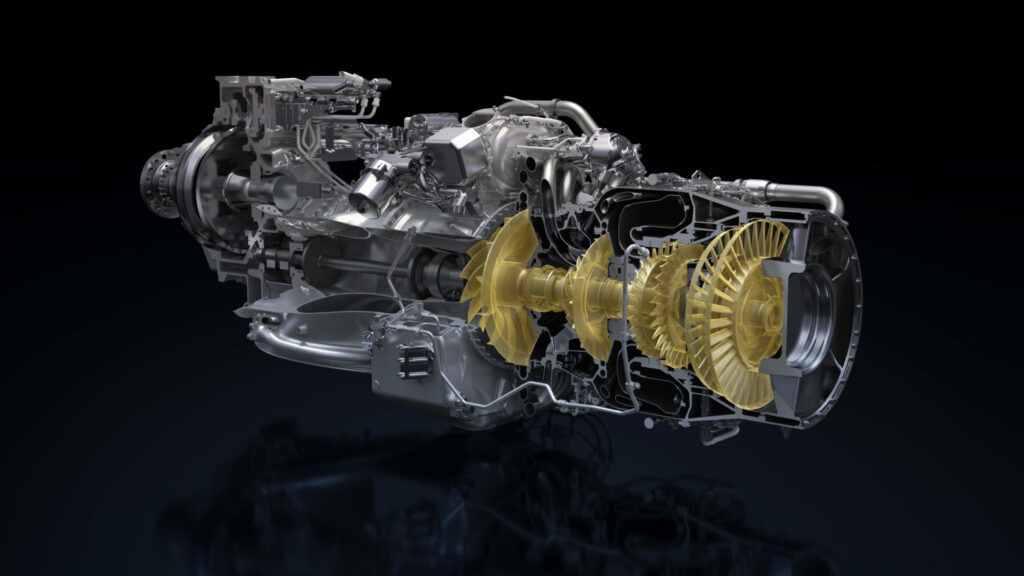
The 40% time on wing assumes a 60-minute average mission in “benign environments.” The reduction in maintenance cost is driven by a requirement for just two scheduled engine events in ten years. Fuel burn improvements were achieved via a new compressor and updated turbine module. Read more
Posted on November 16, 2021 by Judson Rollins
Pontifications: Engines drive timing of new Embraer TPNG
The first report appeared Oct. 18, 2021.
Oct. 25, 2021, © Leeham News: Embraer appears marching toward launching a new turboprop aircraft next year with a targeted 2027 entry into service.
The timing will be determined by the engine. Pratt & Whitney, GE Aviation and Rolls-Royce have development programs. PW and GE are farthest along. PW is thought to have the best chance of winning Embraer’s business. (Pratt & Whitney supplies the engines for the E2 jet. GE supplied the engines for the E1.)
In an interview at the IATA AGM Oct. 3-5 in Boston, Arjan Meijer, the president of Embraer Commercial Aviation, said the competition remains open today.
Posted on October 25, 2021 by Scott Hamilton
Pontifications: The reshaped commercial aviation sector
July 12, 2021, © Leeham News: With Washington State and the US open for business following nearly 18 months of COVID-pandemic shut-down, there is a lot of optimism in commercial aviation.
In the US, airline passenger traffic headcounts are matching or exceeding pre-pandemic TSA screening numbers. Airlines are placing orders with Airbus, Boeing and even Embraer in slowly increasing frequency.
The supply chain to these three OEMs looks forward to a return to previous production rates.
It’s great to see and even feel this optimism. But the recovery will nevertheless be a slow if steady incline.
Posted on July 12, 2021 by Scott Hamilton
2021 fleet trends: small jets get bigger, bigger jets get smaller – and the old makes way for the new
Subscription Required
By Judson Rollins
Introduction
May 13, 2021, © Leeham News: Aviation data provider Cirium said last week that just under 7,850 commercial aircraft were still in storage, down from 8,684 at the beginning of the year and a peak of 16,522 at the apex of the COVID-19 crisis last April.
Although there was an initial spike in aircraft retirements in March and April 2020, the total number has stayed in line with historical norms to date. However, order books for most types have stagnated or even gone backward since the start of the pandemic.
A few trends are becoming clear: larger single-aisles are thriving, larger twin-aisles are disappearing, and sub-100-seat orders are flatlining. Not surprisingly, older-generation aircraft are disappearing at an accelerated rate.
Summary
- Airlines are upgauging their single-aisle orders in anticipation of lower yields and competitive battles.
- Widebody order books continue to struggle; the bigger the airplane, the worse the demand.
- Regional jet and turboprop order backlogs have stagnated.
Posted on May 13, 2021 by Judson Rollins
Bjorn’s Corner: The challenges of hydrogen. Part 32. Wrap-up: Going forward
April 9, 2021, ©. Leeham News: Last week we made a summary of the history of initiatives for sustainable aviation, now we look at the likely developments over the next 10 years.
What is the likely development for different classes of airliners and what technologies will be popular?
Posted on April 9, 2021 by Bjorn Fehrm
Pontifications: Recovery plans from the pandemic at ATR, De Havilland
March 29, 2021, © Leeham News: Aviation stakeholders’ attention understandably focuses on Airbus and Boeing as the industry works its way through the COVID-19 pandemic. Embraer gets less attention than the Big Two.
But two other OEMs must be considered as well: ATR and De Havilland Canada.
Outside of China and Russia, whose home-grown industries sell only to these markets, ATR and DHC are the only manufacturers of turboprops in the 50-90 seat sectors.
LNA revealed on Jan. 12 that DHC would suspend Dash 8-400 production after the small backlog rolled off the assembly line. The privately held company delivered 11 airplanes last year due to the pandemic.
About 900 aging regional turboprop aircraft need to be replaced in the coming years.
Posted on March 29, 2021 by Scott Hamilton
De Havilland to pause production this year after backlog built
By Scott Hamilton
Jan. 12, 2021, © Leeham News: De Havilland Canada will pause production later this year when the current Dash 8-400 backlog is assembled.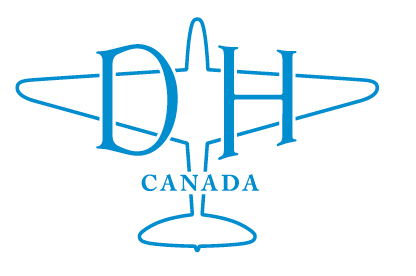
According to data reviewed by LNA, there are 17 Dash 8s scheduled for delivery to customers this year. There are two more that don’t have identified customers. It is unclear if these will be built.
DHC notified suppliers to stop sending parts and components to avoid building whitetails.
De Havilland assembled the Dash 8s at the Toronto plant previously owned by Bombardier. The lease on the facility expires in 2023. There is no decision whether to move the final assembly line to Western Canada, where DHC is headquartered.
Posted on January 12, 2021 by Scott Hamilton
Email Subscription
Twitter Updates
My TweetsAssociations
Aviation News-Commercial
Commentaries
Companies-Defense
Resources
YouTube
Archives
- April 2024
- March 2024
- February 2024
- January 2024
- December 2023
- November 2023
- October 2023
- September 2023
- August 2023
- July 2023
- June 2023
- May 2023
- April 2023
- March 2023
- February 2023
- January 2023
- December 2022
- November 2022
- October 2022
- September 2022
- August 2022
- July 2022
- June 2022
- May 2022
- April 2022
- March 2022
- February 2022
- January 2022
- December 2021
- November 2021
- October 2021
- September 2021
- August 2021
- July 2021
- June 2021
- May 2021
- April 2021
- March 2021
- February 2021
- January 2021
- December 2020
- November 2020
- October 2020
- September 2020
- August 2020
- July 2020
- June 2020
- May 2020
- April 2020
- March 2020
- February 2020
- January 2020
- December 2019
- November 2019
- October 2019
- September 2019
- August 2019
- July 2019
- June 2019
- May 2019
- April 2019
- March 2019
- February 2019
- January 2019
- December 2018
- November 2018
- October 2018
- September 2018
- August 2018
- July 2018
- June 2018
- May 2018
- April 2018
- March 2018
- February 2018
- January 2018
- December 2017
- November 2017
- October 2017
- September 2017
- August 2017
- July 2017
- June 2017
- May 2017
- April 2017
- March 2017
- February 2017
- January 2017
- December 2016
- November 2016
- October 2016
- September 2016
- August 2016
- July 2016
- June 2016
- May 2016
- April 2016
- March 2016
- February 2016
- January 2016
- December 2015
- November 2015
- October 2015
- September 2015
- August 2015
- July 2015
- June 2015
- May 2015
- April 2015
- March 2015
- February 2015
- January 2015
- December 2014
- November 2014
- October 2014
- September 2014
- August 2014
- July 2014
- June 2014
- May 2014
- April 2014
- March 2014
- February 2014
- January 2014
- December 2013
- November 2013
- October 2013
- September 2013
- August 2013
- July 2013
- June 2013
- May 2013
- April 2013
- March 2013
- February 2013
- January 2013
- December 2012
- November 2012
- October 2012
- September 2012
- August 2012
- July 2012
- June 2012
- May 2012
- April 2012
- March 2012
- February 2012
- January 2012
- December 2011
- November 2011
- October 2011
- September 2011
- August 2011
- July 2011
- June 2011
- May 2011
- April 2011
- March 2011
- February 2011
- January 2011
- December 2010
- November 2010
- October 2010
- September 2010
- August 2010
- July 2010
- June 2010
- May 2010
- April 2010
- March 2010
- February 2010
- January 2010
- December 2009
- November 2009
- October 2009
- September 2009
- August 2009
- July 2009
- June 2009
- May 2009
- April 2009
- March 2009
- February 2009
- January 2009
- December 2008
- November 2008
- October 2008
- September 2008
- August 2008
- July 2008
- June 2008
- May 2008
- April 2008
- March 2008
- February 2008


